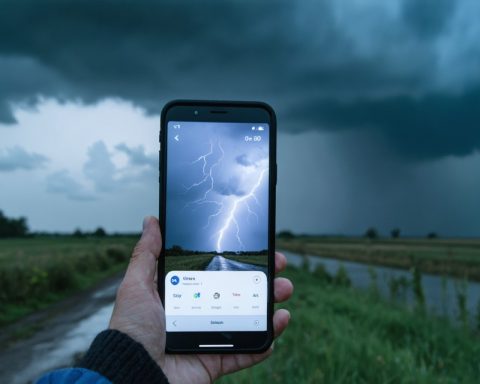Exploring the Uncharted Depths of Our Oceans
In a fascinating twist of exploration, humanity is set to learn considerably more about the ocean floors, an area previously shrouded in mystery. The powerful Surface Water and Ocean Topography (SWOT) satellite, launched by NASA in late 2022 in collaboration with agencies from France, Canada, and the UK, is leading this charge for knowledge.
Utilizing advanced radar altimetry techniques, SWOT adeptly maps the ocean surface, revealing the hidden details of what lies beneath. Remarkably, the satellite can detect subtle changes in ocean height, attributed to the underwater geography. This capability has given researchers access to more insightful data in just one year than they previously gathered over three decades with older technologies.
A prominent researcher from the Scripps Institution of Oceanography highlighted that the results yielded by SWOT allowed for the creation of a significantly enhanced ocean floor map, showcasing details twice as refined as those from earlier studies.
The team is particularly focused on identifying smaller abyssal hills and previously uncharted underwater volcanoes. These geological features are crucial as they reside in tectonically active zones, significantly influencing our understanding of continental margins, nutrient flows, and ecology in coastal environments.
SWOT’s mission, spanning three years, still has two years remaining for scientists to analyze its data. The insights gathered could revolutionize our comprehension of the ocean’s depths, potentially unveiling secrets long hidden from view.
Unlocking Ocean Secrets: The SWOT Satellite’s Groundbreaking Discoveries
The recent advancements in ocean exploration, spearheaded by the Surface Water and Ocean Topography (SWOT) satellite, herald a new era of understanding our planet’s seas. Launched by NASA in collaboration with agencies from France, Canada, and the UK in late 2022, SWOT utilizes cutting-edge radar altimetry techniques to map the ocean’s surface with unprecedented accuracy, revealing the secrets of the ocean floor.
Key Features of SWOT
– Advanced Radar Altimetry: SWOT is equipped with state-of-the-art technology that allows it to detect minute changes in the ocean surface height, shedding light on the underwater topography.
– High-Resolution Mapping: The data collected enables the creation of ocean floor maps with details that are twice as refined as those generated by older methodologies.
– Geological Insights: The satellite’s focus includes identifying small abyssal hills and previously unknown underwater volcanoes, crucial for understanding tectonic activity and its impact on marine ecosystems.
Potential Use Cases
1. Marine Ecology Studies: The detailed mapping of ocean features will provide crucial data for researchers studying marine habitats and biodiversity.
2. Climate Research: By examining nutrient flows and ocean dynamics, scientists can improve climate models and better predict environmental changes.
3. Natural Disaster Preparedness: Understanding tectonically active areas can enhance our ability to forecast seismic events and tsunamis, potentially saving lives.
Limitations and Considerations
While SWOT’s mission has proved to be revolutionary, it is essential to recognize some limitations:
– Temporal Data Collection: Although SWOT is set to operate for three years, the analysis and interpretation of the vast datasets will require considerable time and effort.
– Dependence on Complementary Technologies: SWOT operates best in tandem with other observational technologies such as underwater drones and traditional oceanographic surveys to gain a holistic view of marine environments.
Future Predictions
As SWOT continues its mission, researchers anticipate significant advancements in oceanographic science. The data from SWOT promises to redefine our understanding of the ocean’s role in global climate systems and ecological balance. The interactive nature of this research could lead to the discovery of new marine species and ecosystems, as well as improved conservation efforts based on accurate habitat mapping.
Insights from the Scientific Community
Experts are enthusiastic about the potential of SWOT to transform oceanography. The initial year of data has already provided insights that repurpose decades of research into a more refined and expansive understanding of our oceans. As we await further findings, the scientific community is closely monitoring the implications of SWOT’s discoveries on marine policies and environmental protections.
For more information about ocean exploration and technology, visit NASA.



















